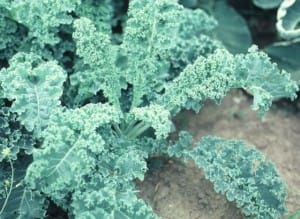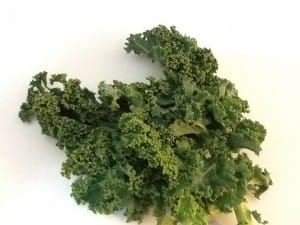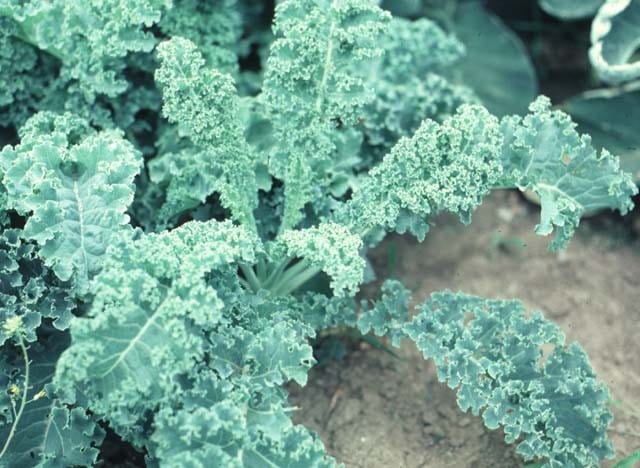
Kale seems to be the vegetable of the year. The nutritive properties of kale are legendary. It is high in vitamins A and C and loaded with fiber. You can find it raw in salads, sautéed in stir-fries, fried into chips, steamed in to a side dish and pureed into smoothies. The good news for community gardeners in Georgia is that kale is easy to grow. It is a cool-season crop and March is the time to plant kale transplants outdoors.
March weather in Georgia can be tricky. If you have grown your own transplants from seed indoors, it is imperative that you harden off your plants. Give them a chance to acclimate to being outdoors by setting them out in a protected area, like on a porch, during a sunny day with no wind. Leave them out only during the day at first. Gradually expose them to a less protected area and then let them be out overnight. Once they are in the garden, protect them from wind. Wind can dry out the plant and damage the plant tissues.
Add compost to the kale bed before planting or add high nitrogen amendments such as blood meal or cottonseed meal. Nitrogen is important since you are growing the plants for the leaves. Space the transplants 18 to 24 inches apart since the plants will get large. Mulch helps keep soil temperatures and moisture even.
Many gardeners say the key to tender kale is the watering. Keep the transplants well watered. As they grow make sure they get about 1 inch of water per week. During the cool temperatures of spring, it is easy to forget to water.
When the plants are ready for harvesting, start with the outer and lower leaves. Remember the smaller leaves will be more tender and would probably be better in salads then the tougher, larger leaves. As the soil temperatures warm up you will find the plant grows faster. As it approaches really warm weather and longer days your established plants may bolt sending up a flower stalk. This is your cue to replace the kale crop with a warm-season vegetable.
leaves will be more tender and would probably be better in salads then the tougher, larger leaves. As the soil temperatures warm up you will find the plant grows faster. As it approaches really warm weather and longer days your established plants may bolt sending up a flower stalk. This is your cue to replace the kale crop with a warm-season vegetable.
Varieties such as “Vates”, “Dwarf Siberian” or “Red Russian” are popular with Georgia gardeners. If you don’t have room in your early spring garden for growing kale, consider putting it in your fall garden.
Next week we will have a kale recipe from a famous Georgia chef. It is a good one!
Happy Gardening!
